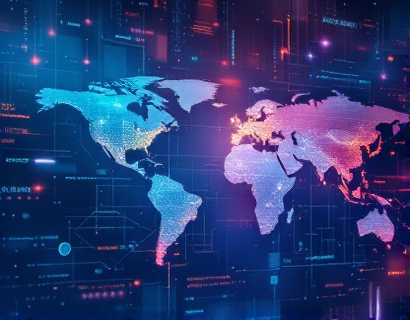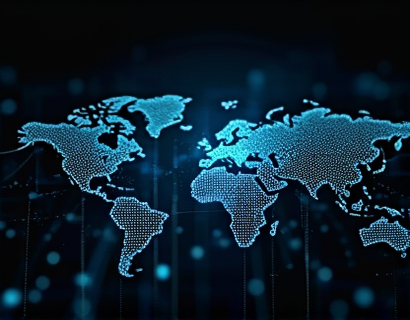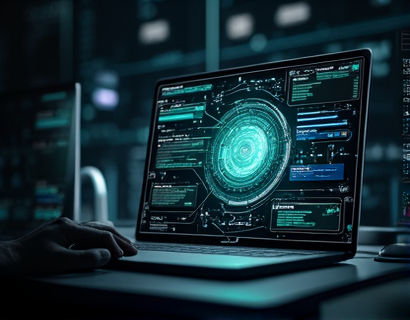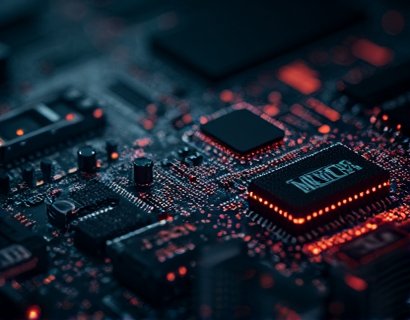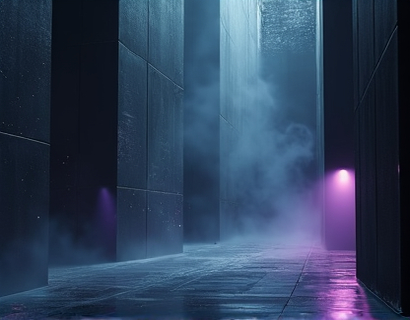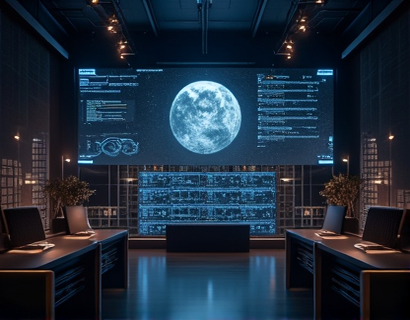Revolutionizing Memorial Creation: The Synergy of AI and Blockchain for Lasting Tributes
The concept of memorializing loved ones has evolved significantly with the advent of technology. Traditional methods, while heartfelt, often fall short in providing a secure, personalized, and lasting tribute. The integration of Artificial Intelligence (AI) and Blockchain technology offers a groundbreaking solution, crafting online memorials that are not only secure and personalized but also ensure the preservation of memories for generations to come. This article delves into how this cutting-edge platform is transforming the way we honor our deceased, providing a unique and meaningful experience for the bereaved.
The Need for Innovative Memorial Solutions
The loss of a loved one is one of life's most profound experiences, leaving an indelible mark on those who remain. Traditional memorials, such as physical monuments or albums, serve as tangible reminders but often lack the personalization and security needed in the digital age. With the increasing number of people seeking online platforms to create and share memories, there is a pressing need for solutions that combine the intimacy of personal tributes with the robustness of modern technology.
Bereaved families and individuals are often overwhelmed by the task of creating a lasting tribute. They seek a platform that not only allows them to express their grief and celebrate the life of their loved one but also ensures that these memories are protected from unauthorized access and loss. The convergence of AI and Blockchain technology addresses these needs, offering a secure, personalized, and enduring way to honor the deceased.
AI: Enhancing Personalization and Emotional Connection
Artificial Intelligence plays a pivotal role in crafting personalized memorials. AI algorithms can analyze vast amounts of data, including photos, videos, messages, and social media posts, to create a comprehensive and nuanced tribute. This technology can identify key moments, emotions, and themes in a person's life, allowing the memorial to reflect their unique personality and journey.
For instance, AI can curate a timeline of significant events, highlighting milestones and achievements. It can also generate personalized messages or quotes that resonate with the deceased's values and interests. By leveraging natural language processing, AI can even compose heartfelt tributes or poems, adding an emotional depth that resonates with those who visit the memorial.
Moreover, AI can facilitate interactive elements, such as virtual guestbooks where visitors can leave messages, share memories, and pay their respects. These interactions can be moderated and archived, ensuring that the memorial remains a living, evolving tribute. The emotional connection is further enhanced by AI-driven recommendations, suggesting ways to engage with the memorial and keep the memory alive.
Blockchain: Ensuring Security and Immutability
Blockchain technology provides the foundation for a secure and tamper-proof memorial platform. By using a decentralized ledger, the platform ensures that all data is encrypted and distributed across multiple nodes, making it virtually impossible to alter or delete. This immutability is crucial for preserving the integrity of memories and ensuring that the tribute remains unchanged over time.
Each contribution to the memorial, whether it's a photo, video, or message, is recorded as a block in the blockchain. This creates a transparent and verifiable record of all interactions with the memorial. Users can trust that their contributions are safely stored and that the memorial will remain intact for future generations.
Blockchain also enables secure access control. Users can set permissions for who can view or contribute to the memorial, ensuring privacy and respect for the deceased and their loved ones. This level of control is particularly important for sensitive information and personal memories.
Combining AI and Blockchain for a Holistic Solution
The true power of this platform lies in the synergy between AI and Blockchain. AI enhances the personalization and emotional depth of the memorial, while Blockchain ensures the security and permanence of the data. Together, they create a comprehensive solution that addresses the multifaceted needs of bereaved families and individuals.
For example, when a user creates a new memorial, AI can guide them through the process, suggesting ways to structure the tribute, curate content, and engage with visitors. The platform can automatically generate a unique URL for the memorial, which can be shared with family and friends. As users add content, AI continuously refines the tribute, ensuring it remains a true reflection of the deceased's life.
Meanwhile, Blockchain ensures that all data is securely stored and accessible only to authorized users. The decentralized nature of the ledger means that even if one node fails, the memorial remains intact. This redundancy and security provide peace of mind, allowing users to focus on honoring their loved ones without worrying about data loss or breaches.
User Experience and Accessibility
The platform is designed with the user in mind, offering an intuitive and accessible interface. Whether a user is tech-savvy or not, the process of creating and managing a memorial is streamlined and straightforward. The AI-driven assistance ensures that users can navigate the platform with ease, receiving guidance and suggestions along the way.
Accessibility is a key consideration, with the platform available on both desktop and mobile devices. This ensures that users can access and update the memorial from anywhere, at any time. The platform also supports multiple languages, making it accessible to a global audience.
Preserving Memories for Future Generations
One of the most significant advantages of this AI and Blockchain-based platform is its ability to preserve memories for future generations. Unlike traditional memorials that can deteriorate over time, a digital tribute stored on a blockchain is designed to last indefinitely. This ensures that the legacy of the deceased is not lost to the passage of time.
Moreover, the platform can include features that allow future generations to contribute to the memorial, adding their own memories and reflections. This creates a living history that evolves over time, providing a comprehensive and dynamic tribute to the deceased.
Case Studies and Real-World Applications
Several organizations and individuals have already begun to explore the potential of AI and Blockchain in memorial creation. For instance, a community-driven project used this technology to create a digital memorial for victims of a natural disaster. The platform allowed families to upload photos, videos, and personal stories, creating a collective tribute that honored the lives lost and provided a space for healing and remembrance.
Another example is a family who used the platform to create a memorial for their deceased loved one. They appreciated the ability to curate a personalized tribute, including a timeline of important events, favorite quotes, and interactive guestbooks. The Blockchain aspect provided them with reassurance that the memorial would remain secure and accessible for their children and grandchildren.
Challenges and Future Developments
While the integration of AI and Blockchain in memorial creation offers numerous benefits, there are also challenges to consider. One of the primary challenges is ensuring user adoption and understanding of the technology. Education and support are crucial to help users navigate the platform and fully utilize its features.
Another challenge is the regulatory landscape, particularly concerning data privacy and compliance with laws such as GDPR. The platform must adhere to strict data protection standards, ensuring that user information and memorial content are handled with the utmost care.
Looking ahead, the potential for further innovation is vast. Integration with virtual reality (VR) and augmented reality (AR) could create immersive experiences, allowing users to virtually visit the memorial and interact with it in new ways. Additionally, the development of more sophisticated AI algorithms could enhance the personalization and emotional depth of the tributes, making them even more meaningful and impactful.
Conclusion
The combination of AI and Blockchain technology represents a significant leap forward in the creation of online memorials. This platform not only provides a secure and personalized way to honor the deceased but also ensures that memories are preserved for generations to come. As technology continues to evolve, the potential for even more innovative solutions in memorial creation is immense, offering hope and comfort to those who grieve.










